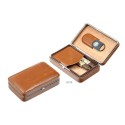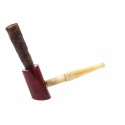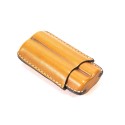The Cigar Anilla
In the cultural epic of the cigar, every detail counts: from the selection of tobacco to its processing, from skilled labor to its making.
Each step reflects a legacy of tradition and passion, and yet, there is one component that is often underestimated but carries with it a profound cultural legacy: the cigar anilla.
In this article, we will discover the history of the cigar anilla and its function.
History of the Cigar Anilla
Going back in time, more precisely to the 19th century, when the cigar was becoming a hallmark of sophistication in Europe, the anilla made its appearance.
Originating in Spain, the European home of the cigar, this small paper band had a simple but essential task: to protect the gloves of aristocratic women from the marks left by tobacco oil.
But the evolution of the anilla did not stop there.
As the cigar industry grew and became more sophisticated, the anilla became a vehicle for branding companies. It was no longer just a protective barrier, but an emblem of pride, tradition, and distinction.
In a rapidly expanding market, where every manufacturer was trying to establish itself, the anilla became a hallmark, a way to tell the world the story of one's brand.
As time went on, the design of the anilla became more and more elaborate: brands began to use bright colors, evocative images and intricate designs to represent their identity.
A careful analysis of anilla from different eras can reveal much about the culture and society of the time.
They reflect artistic trends, social values, and, of course, the history of tobacco and cigars.
The Cigar Anilla: What is it for?
For cigar enthusiasts, the anilla offers valuable informations.
It can reveal the cigar's country of origin, the region where the tobacco was grown and sometimes even the date of production.
This information can influence the choice of a cigar, helping the smoker better understand what he or she is about to enjoy.
Store or Remove the Anilla?
The question of when or whether to remove the anilla is a matter of debate among enthusiasts.
While some believe it should be left until it comes off easily with the heat of the cigar, others argue that it should be removed before lighting the cigar.
This debate highlights the importance of the anilla in the ritual of smoking a cigar.
Interesting how, over the years, many people have begun collecting anillas, creating fascinating collections that document the history of the cigar industry.
In addition, the anilla has found its place in pop culture, appearing in movies, books, and songs, further underscoring its cultural and historical importance.
In a world where details matter, the cigar anilla stands as an emblem of the tradition, history, and art of the tobacco industry.
More than just a paper band, it represents a link between the past and the present, between the manufacturer and the consumer.









